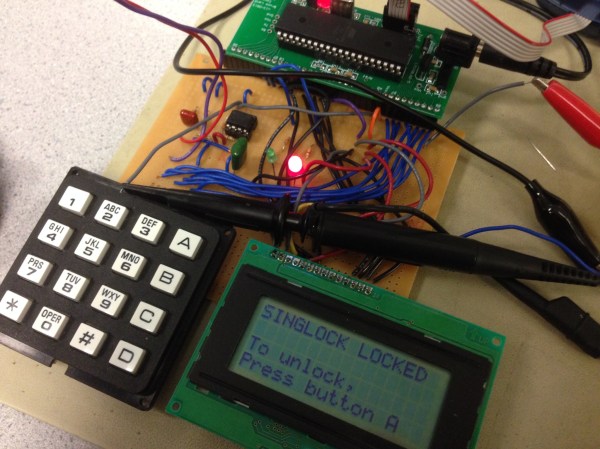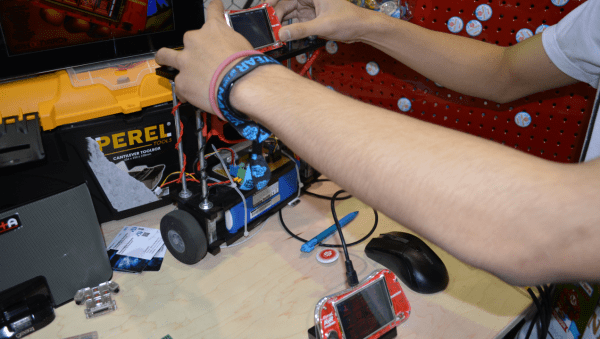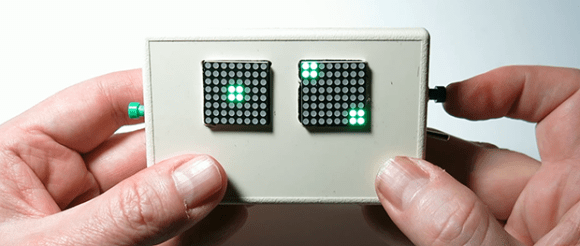Origami cranes are cool, but do you know what’s cooler? Origami cranes dancing to the beat. That’s the challenge [Basami Sentaku] took on when he created Dancing Paper (YouTube link). You might remember [Basami] from his 8 bit harmonica hack. In Dancing Paper, paper cranes seem to dance all on their own – even performing some crazy spinning moves. Of course, the “magic” is due to some carefully written code, and magnets, lots of magnets.
Using magnets to move objects from below isn’t a new concept. Many of us have seen the “ice skating pond” Christmas decoration which uses the same effect. Unlike the skating pond,Dancing Paper has moving parts (other than the cranes themselves). Under the plastic surface are a series of individually controlled electromagnets. Each of the supporting dancers has a line of four magnets, while the featured dancer in the center has a 5×5 matrix. The 41 electromagnets were wound around bolts with the help of a Tamiya motor and gearbox.
The actual dance moves are controlled by C code which appears to be running on an Atmel microcontroller. Of course a microcontroller wouldn’t be able to drive those big coils, so some beefy TO-220 case transistors were employed to switch the loads. The cranes themselves needed a bit of modification as well. Thin pieces of wire travel from the neodymium magnets on their feet up to the body of the crane. The wire provides just enough support to keep the paper from collapsing, while still being flexible enough to boogie down.
Click past the break to see Dancing Paper in action!














